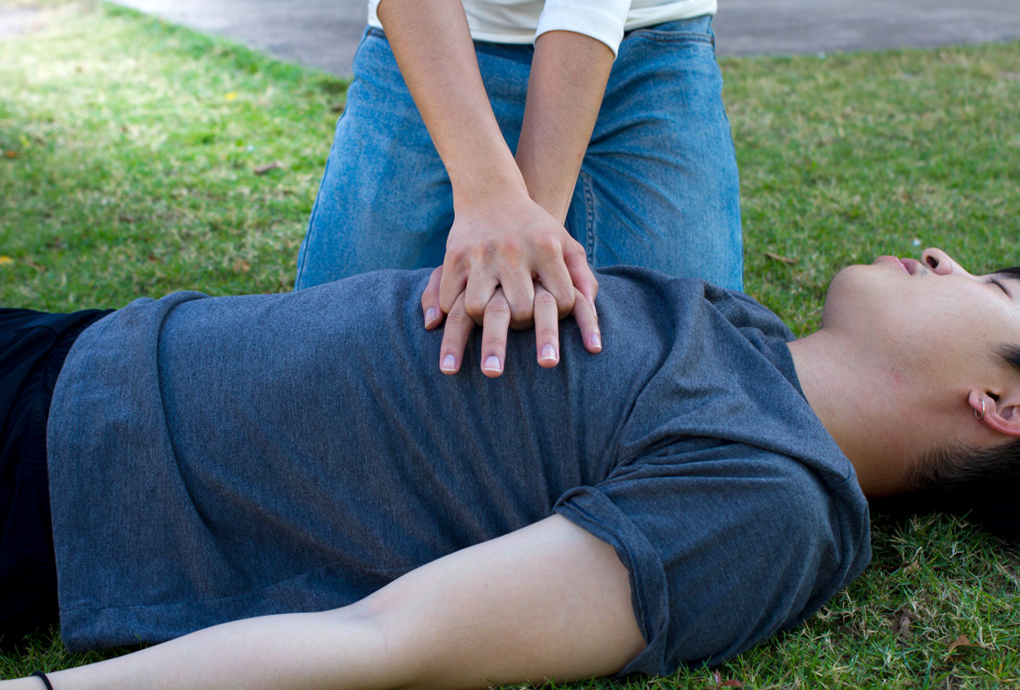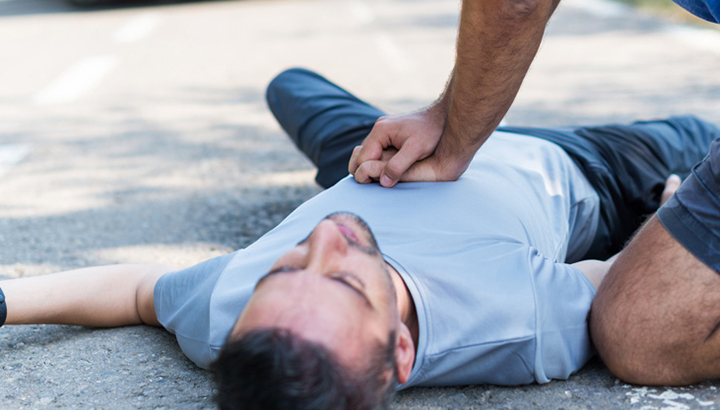
We live in a world of acronyms, some of the better-known being IRS, FTC, GPS, USDA and, locally, NBPD. In fact the federal government prints a compendium of the more than 5,200 acronyms that describe the federal operating structure.
Depending on one’s interaction with those and other acronymic entities, there is probably only one amongst them that never generates negative feelings: CPR, or Cardiac Pulmonary Resuscitation.
In Newport Beach, CPR training is mandated for all public safety employees—fire, police and lifeguards, said John Pope, public information officer for the city. Those individuals must re-certify every 24 months. Over the years, the fire department has offered “lay person CPR” to city employees during lunch and learn sessions, but that training is not required.
All firefighters are considered EMTs (another acronym meaning Emergency Medical Technicians) and provided with additional training. Firefighter Paramedics receive additional advanced cardiac life support training for pediatrics.
The last CPR incident involving city employees administering CPR in addition to using an AED defibrillator occurred in 2019, at City Hall, when they came to the assistance of a citizen prior to the arrival of the fire department.
Fortunately for many heart attack victims, regular citizens have come to the rescue of those suffering. In 2020, according to Pope, 46 percent of cardiac arrests occurring in the city “had bystander CPR prior to arrival of the fire department.”
A year earlier, 54.7 percent of cardiac arrest victims received bystander CPR involvement. Records show that these victims were not (here we go, again) DOA, and resuscitation was continued by firefighter paramedics.
The city offers CPR training free of charge to its citizens through its Community Emergency Response Training (CERT ) program offered by the fire department. The department has also provided “lay person CPR and AED” training, most often through HOAs, clubs, large businesses, and others, at no charge.
One can go on-line to search for other trainers of CPR, which includes the American Heart Association, Pope informed.
In so many cardiac instances, “the beat goes on,” in large part because citizens who care took the time to learn the simple lifesaving technique that is CPR – while those whose job is saving lives stay atop this art throughout their working careers.
SIDEBAR: Dr. Nadir Qazi Reminds the Public of the Importance of Administering CPR in Saving Lives
As we get back to life post pandemic quarantine, Dr. Nadir Qazi has an important message to share about knowing and conducting CPR as quickly as possible on an unconscious person.
Dr. Qazi lost his 36-year-old sister to a sudden heart attack through a condition known as Ventricular Tachycardia. This is the same condition that inflicted Danish soccer player Christian Eriksen when he collapsed during Denmark’s Euro 2021 opener with Finland. Eriksen survived, likely because emergency services were administered immediately, whereas Dr. Qazi’s sister did not receive any type of emergency services until it was already too late. A bystander found Nadia Qazi in an unconscious state, but that person ran for help rather than administering CPR.
To honor his sister’s memory, Dr. Qazi and his family would like to remind the public of the importance of administering CPR early to save lives.
“Most important is to keep oxygen flowing to the brain by keeping blood pumping through the heart,” says Dr. Qazi. “Make sure 911 is called immediately so that help is on its way.”
In addition to notifying the first responder teams, the 911 dispatcher can guide the caller through each step of CPR until help arrives.
Sudden death due to ventricular tachyarrhythmias is a leading cause of death, accounting for 15 to 20 percent of all deaths. Often a manifestation of atherosclerotic coronary artery disease or heart failure, incidence of sudden cardiac death (SCD) in the United States ranges between 180,000 and 450,000 cases annually, and accounts for more than 50 percent of all deaths from coronary heart disease (CHD). However, not everyone is aware they have this condition and symptoms can arise from overexertion, heat exhaustion, drugs, caffeine, or a slew of other factors.
 The American Red Cross offers CPR training classes for individuals and groups along with other lifesaving courses through redcross.org/take-a-class.
The American Red Cross offers CPR training classes for individuals and groups along with other lifesaving courses through redcross.org/take-a-class.
As we get back into the public domain as a functioning society, it’s important to remember the rules of public safety. When you witness the collapse of another person, or if you come upon someone who is unconscious, follow these guidelines by the American Red Cross:
Before Giving CPR
- Check the scene and the person. Make sure the scene is safe, then tap the person on the shoulder and shout “Are you OK?” to ensure that the person needs help.
- Call 911 for assistance. If it is evident that the person needs help, call (or ask a bystander to call) 911, then send someone to get an Automated External Defibrillator (AED).
- If an AED is unavailable, or a there is no bystander to access it, stay with the victim, call 911 and begin administering CPR assistance.
- Open the airway. With the person lying on his or her back, tilt the head back slightly to lift the chin.
- Check for breathing. Listen carefully, for no more than 10 seconds, for sounds of breathing. (Occasional gasping sounds do not equate to breathing.) If there is no breathing, begin CPR.
Red Cross CPR Steps
- Push hard, push fast. Place your hands, one on top of the other, in the middle of the chest. Use your body weight to help you administer compressions that are at least 2 inches deep and delivered at a rate of at least 100 compressions per minute.
- Deliver rescue breaths. With the person’s head tilted back slightly and the chin lifted, pinch the nose shut and place your mouth over the person’s mouth to make a complete seal. Blow into the person’s mouth to make the chest rise. Deliver two rescue breaths, then continue compressions.
- Note: If the chest does not rise with the initial rescue breath, re-tilt the head before delivering the second breath. If the chest doesn’t rise with the second breath, the person may be choking. After each subsequent set of 30 chest compressions, and before attempting breaths, look for an object and, if seen, remove it.
- Continue CPR steps. Keep performing cycles of chest compressions and breathing until the person exhibits signs of life, such as breathing, an AED becomes available, or EMS or a trained medical responder arrives on scene.
- Note: End the cycles if the scene becomes unsafe or you cannot continue performing CPR due to exhaustion.
About Nadir Qazi, MD: Dr. Nadir Qazi is a board-certified medical physician and owner of Qazi Cosmetic Clinic. Visit https://qaziclinic.com.





